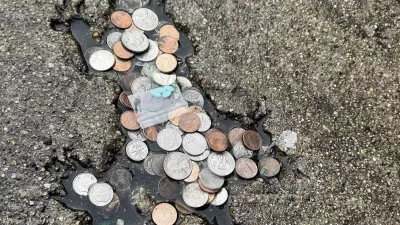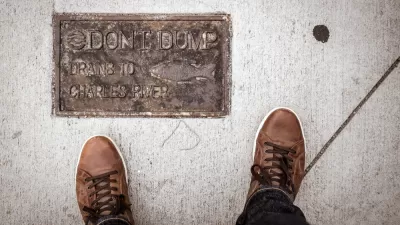Because of President-elect Obama’s plans to spend billions of dollars on infrastructure, some recent discussion of smart growth has focused on proposals for huge projects, such as rebuilding America’s rail network. But walkability often depends on much smaller steps, steps that require changes in tiny increments of space.
Because of President-elect Obama's plans to spend billions of dollars on infrastructure, some recent discussion of smart growth has focused on proposals for huge projects, such as rebuilding America's rail network.
But walkability often depends on much smaller steps, steps that require changes in tiny increments of space.
For example, take a typical tree-lined, upper-class suburban neighborhood, such as the fancier blocks of Atlanta's Buckhead. A four-foot wide sidewalk, although not ideal, can make such a neighborhood very pleasant and walkable. (For an example, see http://atlantaphotos.fotopic.net/p14704743.html )
Now substitute a strip of lawn for the sidewalk. (For examples, see http://atlantaphotos.fotopic.net/p44263562.html and http://atlantaphotos.fotopic.net/p14008023.html ) The neighborhood is not so inviting to pedestrians; although it is certainly possible to walk on this strip of lawn, the lawn can be muddy in rough weather, and a pedestrian might feel uncomfortable walking on something that is not obviously public space. Nevertheless, a city that cannot afford to build new sidewalks would be well advised to encourage homeowners to allow a small easement on their lawn for pedestrians, since the lawn strip is better than the alternative, which is
Nothing. In much of Atlanta, homeowners allow trees and bushes to go right up to the street, rather than flanking the street with lawns. (For an example, see http://atlantaphotos.fotopic.net/p14010314.html ) As a result, pedestrians must walk on the street, sharing that street with vehicles.
In sum, the fate of one or two strips of land just four feet wide makes the difference between a reasonably walkable residential street, a somewhat pedestrian-unfriendly street, and a street that virtually excludes pedestrians.
Even in the latter situation, a few feet makes a difference between the worst possible street and a merely bad one. On many sidewalk-less residential streets, cars go 40 miles per hour, creating a very risky situation for pedestrians. By contrast, when I visited my parents' vacation house in the mountains of North Carolina, people routinely hiked in the middle of the street. Why? Because the street was narrow enough that vehicle traffic was relatively slow, thus allowing pedestrians to reclaim the street to some extent. Again, a few feet made a big difference.

Planetizen Federal Action Tracker
A weekly monitor of how Trump’s orders and actions are impacting planners and planning in America.

Restaurant Patios Were a Pandemic Win — Why Were They so Hard to Keep?
Social distancing requirements and changes in travel patterns prompted cities to pilot new uses for street and sidewalk space. Then it got complicated.

Map: Where Senate Republicans Want to Sell Your Public Lands
For public land advocates, the Senate Republicans’ proposal to sell millions of acres of public land in the West is “the biggest fight of their careers.”

Maui's Vacation Rental Debate Turns Ugly
Verbal attacks, misinformation campaigns and fistfights plague a high-stakes debate to convert thousands of vacation rentals into long-term housing.

San Francisco Suspends Traffic Calming Amidst Record Deaths
Citing “a challenging fiscal landscape,” the city will cease the program on the heels of 42 traffic deaths, including 24 pedestrians.

California Homeless Arrests, Citations Spike After Ruling
An investigation reveals that anti-homeless actions increased up to 500% after Grants Pass v. Johnson — even in cities claiming no policy change.
Urban Design for Planners 1: Software Tools
This six-course series explores essential urban design concepts using open source software and equips planners with the tools they need to participate fully in the urban design process.
Planning for Universal Design
Learn the tools for implementing Universal Design in planning regulations.
Heyer Gruel & Associates PA
JM Goldson LLC
Custer County Colorado
City of Camden Redevelopment Agency
City of Astoria
Transportation Research & Education Center (TREC) at Portland State University
Camden Redevelopment Agency
City of Claremont
Municipality of Princeton (NJ)





























